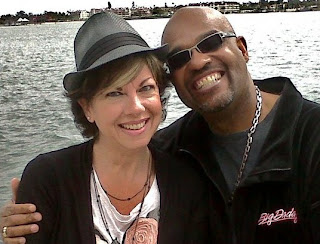WASHINGTON (AP) - Interracial marriages in the U.S. have climbed to 4.8 million—a record 1 in 12—as a steady flow of new Asian and Hispanic immigrants expands the pool of prospective spouses. Blacks are now substantially more likely than before to marry whites.
A Pew Research Center study, released Thursday, details a diversifying America where interracial unions and the mixed-race children they produce are challenging typical notions of race.
"The rise in interracial marriage indicates that race relations have improved over the past quarter century," said Daniel Lichter, a sociology professor at Cornell University. "Mixed-race children have blurred America's color line. They often interact with others on either side of the racial divide and frequently serve as brokers between friends and family members of different racial backgrounds," he said. "But America still has a long way to go."
The figures come from previous censuses as well as the 2008-2010 American Community Survey, which surveys 3 million households annually. The figures for "white" refer to those whites who are not of Hispanic ethnicity. For purposes of defining interracial marriages, Hispanic is counted as a race by many in the demographic field.
The study finds that 8.4 percent of all current U.S. marriages are interracial, up from 3.2 percent in 1980. While Hispanics and Asians remained the most likely, as in previous decades, to marry someone of a different race, the biggest jump in share since 2008 occurred among blacks, who historically have been the most segregated.
States in the West where Asian and Hispanic immigrants are more numerous, including Hawaii, Nevada, New Mexico and California, were among the most likely to have couples who "marry out"—more than 1 in 5. The West was followed by the South, Northeast and Midwest. By state, mostly white Vermont had the lowest rate of intermarriage, at 4 percent.
In all, more than 15 percent of new marriages in 2010 were interracial.
The numbers also coincide with Pew survey data showing greater public acceptance of mixed marriage, coming nearly half a century after the Supreme Court in 1967 barred race-based restrictions on marriage. (In 2000, Alabama became the last state to lift its unenforceable ban on interracial marriages.) About 83 percent of Americans say it is "all right for blacks and whites to date each other," up from 48 percent in 1987. As a whole, about 63 percent of those surveyed say it "would be fine" if a family member were to marry outside their own race.
Minorities, young adults, the higher educated and those living in Western or Northeast states were more likely to say mixed marriages are a change for the better for society. The figure was 61 percent for 18- to 29-year-olds, for instance, compared to 28 percent for those 65 and older.
Due to increasing interracial marriages, multiracial Americans are a small but fast-growing demographic group, making up about 9 million, or 8 percent of the minority population. Together with blacks, Hispanics and Asians, the Census Bureau estimates they collectively will represent a majority of the U.S. population by mid-century.
"Race is a social construct; race isn't real," said Jonathan Brent, 28. The son of a white father and Japanese-American mother, Brent helped organize multiracial groups in southern California and believes his background helps him understand situations from different perspectives.
Full Story View this link: Shopping mall in Chennai

No comments:
Post a Comment